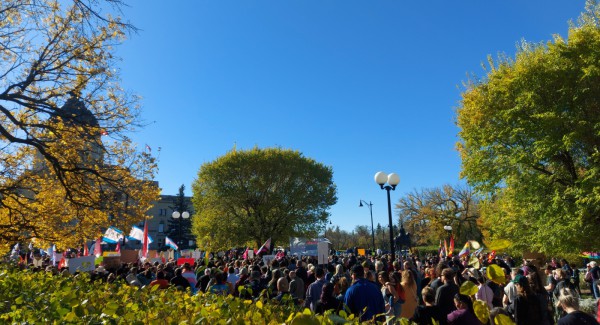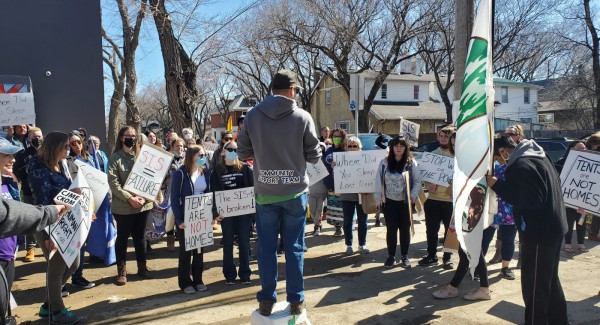Health-care spending big – but misses the mark

Photo by Zakir Rushanly.
This year’s 2022-23 provincial budget left a lot to be desired by almost all groups. Even the Saskatchewan Roughriders have spoken out against the budget’s expansion of provincial sales tax (PST) to cover entertainment events, like admissions to movies, concerts, museums, and Roughriders games.
When criticized, the government is quick to point to their record-high spending on health care. But after careful analysis of the budget, it’s clear this health spending is not all it’s cracked up to be.
Many of the announcements in the budget are recycled news. The government re-announced several infrastructure investments, including $5 million for continued progress on the La Ronge and Grenfell long-term care facilities. In 2020 the government earmarked $73 million for new long-term care facilities in each community, but little meaningful progress has been made to date. Last year the government announced that construction on the new $300-million Victoria Hospital in Prince Albert would start this year, but this year’s budget only earmarks $13.5 million to cover the procurement and design stages of the project. On top of it all, the promised replacement for Regina’s Pioneer Village long-term care facility didn’t even get a mention.
For example, in 2020 Mayfair Diagnostics, an Alberta-based private company that donated $1,400 to the Sask Party, was awarded a $14-million contract to provide at least 4,500 MRI scans per year.
Next, let’s look at the money earmarked for reducing the long waitlists for surgery and diagnostic imaging. Minister of Finance Donna Harpauer suggested that the estimated $20 million raised by expanding the PST to entertainment events would pay for initiatives to reduce wait times for surgery. But there’s been no mention of what steps the government will take to shorten waitlists, or on what timeline – and the project seems to be linked to a drive toward increased privatization. In recent years the government has moved toward private, for-profit care – often delivered by contractors who also happen to have donated to the Sask Party during the 2020 election.
For example, in 2020 Mayfair Diagnostics, an Alberta-based private company that donated $1,400 to the Sask Party, was awarded a $14-million contract to provide at least 4,500 MRI scans per year. Surgical Centres Inc., a private surgical company that donated $5,000, has already benefited from moves to contract out surgeries, getting a three-year contract in 2011 to provide surgeries in a private facility in Saskatoon. I would not be surprised if this government handed over additional contacts to their donors.
It cannot be said too many times: contracting out surgeries is not a magic bullet for long wait times. There is a limited pool of health-care staff, and privatization of health-care services pulls those staff away from the public system.
The Sask Party government will point to worker recruitment and retention in order to illustrate its supposed commitment to public health care. But there is nothing in the Sask Party’s budget that will immediately alleviate the workload issues of health-care workers. Our members are burning out now. Rural facilities are already facing shutdowns and service reductions. In city hospitals, hallway medicine has become the norm. We need relief now.
But the relief the Sask Party wants to provide comes in the form of more bloated administrative processes. This budget established a new and independent agency dedicated to recruiting and retaining health-care workers. While we’re glad the government recognizes the need to improve recruitment and retention, we question the need for another layer of government bureaucracy.
Our members are burning out now. Rural facilities are already facing shutdowns and service reductions. In city hospitals, hallway medicine has become the norm. We need relief now.
The Saskatchewan Health Authority is the primary employer of health-care workers, and their collective agreements have provisions and processes for dealing with recruitment and retention – including market supplements to attract qualified workers, committees for joint recruitment and retention, and posting more full-time permanent jobs. The answers lie in practical solutions: take training to the untrained workforce wherever workers are needed. Use the network of community colleges to offer the training in more rural, northern, and remote areas. Subsidize or simply pay for the training of workers who are so desperately needed. Build partnerships with First Nations to provide training opportunities to their members, and finally make good on the empty promise of a representative workforce in health care.
Let’s look at the announcement of 300 new continuing care assistant (CCA) positions – an election promise the Sask Party made in 2020. Last month the government bragged that they have filled 101 of the 108 CCA positions they committed to hiring in the 2020-2021 provincial budget. But there are currently over 170 vacancies just for CCAs posted on Sask Health Careers. Many of these jobs are in communities facing chronic staffing shortages and facility closures, like Assiniboia, Broadview, and Porcupine Plain. Out of those 170 current postings only 12 are permanent, full-time positions.
This is the same across all types of health-care jobs: the majority of jobs are precarious, high stress, and shockingly low-paying. Many of our members are working two or three other jobs to make ends meet. Health-care workers haven’t had a meaningful wage increase in several years. Wages are not keeping up with the rising cost of living.
The government didn’t need to create an arm’s-length agency to address recruitment and retention. They just needed to talk to the health-care workers. We know what we need: decent wages, job security, and some respect for the front-line workers who can’t afford to be big Sask Party government donors. Hopefully, the government will think about us in the next budget.
Parts of this op-ed are adapted from the 2022 budget analysis published on cupe5430.ca on March 25, 2022.




